


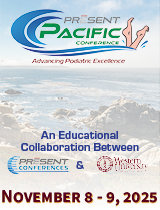


|

|
|
|

|
Search
05/31/2016 Harry Goldsmith, DPM
Success Tips From the Masters
Steven Latter, DPM: When capturing casting for
orthotics should you bill a casting fee?
Harry Goldsmith: If the patient’s insurance policy
includes a custom foot orthotic benefit, I certainly
would recommend billing for orthotic impression
casting. Unlike Medicare that bundles the evaluation
for AFOs, therapeutic shoes, and inserts with any
casting, manufacturing, fitting, and dispensing
performed by the supplier, commercial payers vary in
their payment policies. While non-Medicare payers
typically follow this reimbursement policy for
orthotists, it is not unusual for the same commercial
payers to separately pay for impression casting and
the supply (custom foot orthotics) to DPMs (or
MDs/DOs).
In my experience as a claims reviewer, the
differences between reimbursement to the orthotist
and the podiatrist (for example) for the same devices
is remarkable. An orthotist may get as much as twice
the allowance because everything is bundled into a
single payment. The podiatrist, on the other hand,
may have the opportunity to bill for the professional
services involved with obtaining an impression cast
of the foot.
There is a value to evaluating the patient’s foot
problems, determining custom foot orthotics are
necessary, prepping the patient for the casting,
placing the patient’s foot in the corrected position
for casting, holding that foot for 5-7.5 minutes
(minimally) in that position while the plaster
hardens, removing the plaster impression casts,
evaluating them, and shipping them out.
CPT does not have a code specific code for orthotic
impression casting (the best CPT code you can try to
use is the unlisted casting code, CPT 29799). HCPCS,
however, does have a specific code, S0395, that is
defined as “impression casting of a foot performed by
a practitioner other than the manufacturer of the
orthotic”. You can’t get more specific than that.
It would be billed S0395-RT and S0395-LT. It includes
the casting material. Keep in mind that not all
“private” payers have 1) custom foot orthotic
benefits and 2) recognize S0395 for separate payment.
Check with the specific payer in question.
Other messages in this thread:
04/25/2017
SUCCESS TIPS FROM THE MASTERS
Bret Ribotsky: The emphasis on biomechanics in podiatric education has been diminished. How does podiatry reclaim this area of expertise?
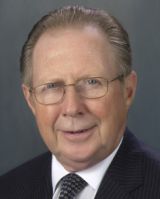 |
Dr. Harold Schoenhaus |
Harold Schoenhaus: The schools have an obligation beyond the DPM degree. They should be the place where people can go to for post-graduate education. Podiatric schools, as opposed to allopathic medical schools, do not recognize the value of faculty who bring real world clinical experience to the schools.
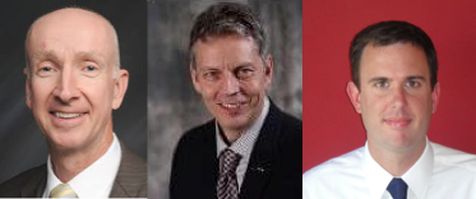 |
(L-R) Drs. John Grady, Patrick Agnew, and Louis DeCaro |
Meet the Masters is broadcast each Tuesday Night at 9 PM (EST). This week's guests will be podopediatrics experts Drs. John Grady, Patrick Agnew, and Louis DeCaro. You can register for this event by clicking here.
04/04/2017
SUCCESS TIPS FROM THE MASTERS
Bret Ribotsky: What can individual podiatrists do to help podiatric medicine and surgery survive and flourish?
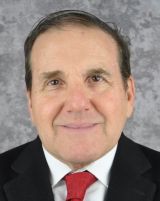 |
Dr. Barry Block |
Barry Block: While belonging to the podiatric associations and supporting APMAPAC are vital steps to podiatry's survival, they are simply not enough. Each and every podiatrist must become an ambassador for our medical specialty. There should be career information in every podiatric office. Additionally, every podiatrist must "recruit" his or her patients to support legislation critical to us. While it is necessary and useful for us to lobby our legislators, it can be seen as self-serving. Enlisting our patients to lobby is a far more effective way to get the attention of legislators.
Meet the Masters is broadcast each Tuesday Night at 9 PM (EST). This week's guest is to be announced. You can register for this event by clicking here.
03/29/2017
SUCCESS TIPS FROM THE MASTERS
Bret Ribotsky: Who is looking at PQRS scores and how will it affect those in practice?
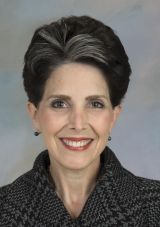 |
Dr. Caroline Fife |
Caroline Fife, MD: All the PQRS scores are public and are for your patients to see on the Physician Compare website. YELP is doing a deal with CMS to use a “star” system next year, and thus the measures that you pick to report really do matter. Also, everyone should learn how to look up their own QRUR report.
 |
Dr. Barry Block |
Meet the Masters is broadcast each Tuesday Night at 9 PM (EST). This week's guest will be Barry H. Block, DPM, JD, Editor of Podiatry Management and publisher of PM News. You can register for this event by clicking here
03/21/2017
SUCCESS TIPS FROM THE MASTERS
Bret Ribotsky: What is the future of podiatric sports medicine?
 |
Dr. Robert Conenello |
Robert Conenello: I think our future is dependent on our ability to work with orthopedists, physical therapists, and athletic trainers. We need to demonstrate our equality in those areas that each of us excel in. Parity will then be recognized.
 |
Dr. Caroline Fife |
Meet the Masters is broadcast each Tuesday Night at 9 PM (EST). This week's guest will be Caroline Fife, MD - Medical Director of the Wound Care Registry. You can register for this event by clicking here
03/14/2017
SUCCESS TIPS FROM THE MASTERS
Bret Ribotsky: Why and how is shock wave therapy being used today?
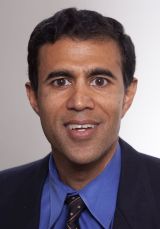 |
Dr. Amol Saxena |
Amol Saxena: It's the only thing that we do muscular skeletal-based that is evidence-based medicine proven to work for plantar fasciitis, Achilles tendonitis, and shin splints. These are the three most common uses for shock wave therapy. There is no high energy or low energy devices today; there are radial devices and focused devices.
Meet the Masters is broadcast each Tuesday Night at 9 PM (EST). This week's guest is to be announced. You can register for this event by clicking here.
03/07/2017
SUCCESS TIPS FROM THE MASTERS
Bret Ribotsky: If you were to strip off the top layer of the skin, how is Caucasian skin different from African-American or Asian skin?
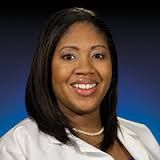 |
Dr. Chesahna Kindred |
Chesahna Kindred, MD, MBA: Even with the cells that cause color removed, there is a difference between skin types when it comes down to fibroblasts, and it is the fibroblasts that have to deal with wound healing, scarring ,and keloid formation.
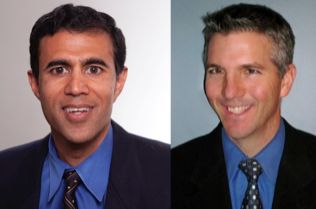 |
Drs. Amol Saxena and Robert Conenello |
Meet the Masters is broadcast each Tuesday Night at 9 PM (EST). This week's program will feature Sports medicine experts Drs. Amol Saxena and Robert Conenello. You can register for a future event by clicking here
02/28/2017
SUCCESS TIPS FROM THE MASTERS
Bret Ribotsky: As a 3rd year student, how would you feel if at the end of your training, you were given an MD instead of a DPM degree?
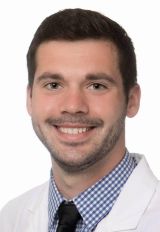 |
William McGlone |
William McGlone: I do not feel that the training we are receiving today would prepare us for this degree.
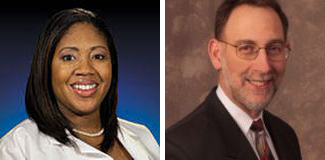 |
Drs. Chesahna Kindred and Joel Morse |
Meet the Masters is broadcast each Tuesday Night at 9 PM (EST). This week's program will feature dermatologist Chesahna Kindred, MD, MBA and podiatrist Joel Morse, DPM. You can register for a future event by clicking here
02/14/2017
SUCCESS TIPS FROM THE MASTERS
Bret Ribotsky: How do you choose which specialty to send patients who need a vascular work-up? Vascular surgeons, radiologists, and cardiologists are all fighting for these patients.
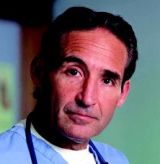 |
Dr. David Allie |
David Allie: That’s a great question - I’m a cardio-thoracic surgeon. I practice in the South and in my area, the cardiologists were first to get involved with peripheral arterial care. In the Northeast, it was the vascular surgeons who were the leaders. In your area of South Florida, I know it was the radiologists. So all in all, find the best person who works with you well and develop a bi-directional referral pattern. In this way, many patients can be helped.
Meet the Masters is broadcast each Tuesday Night at 9 PM (EST). This week's program will not be live because of Valentine's Day. You can register for a future event by clicking here
02/07/2017
SUCCESS TIPS FROM THE MASTERS
Bret Ribotsky: We’ve talked about the value of owning a dermatoscope and doing biopsies. What else should all DPMs be looking for in their patients?
 |
Dr. Allen Jacobs |
Allen Jacobs: For the life of me, I can’t understand the lack of attention to venous disease. Ulcers, venous statis, compression therapy, venous ligation, and the list goes on and on. This pathology is something we all see daily.
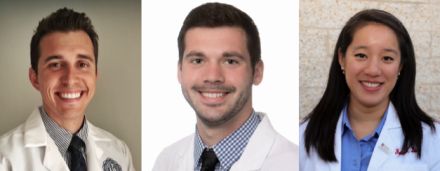 |
Dallas Valerio, Billy McGlone, and Julie Lin |
Meet the Masters is broadcast each Tuesday Night at 9 PM (EST). This week's guests will be American Podiatric Medical Student Association representatives Dallas L. Valerio, Billy McGlone, and Julie Y. Lin. You can register for this event by clicking here
01/24/2017
SUCCESS TIPS FROM THE MASTERS
Bret Ribotsky: After a few years of PQRS, has the “quality of care” really changed?
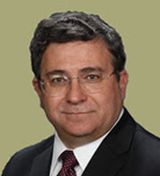 |
Dr. Harry Goldsmith |
Harry Goldsmith: The reality is that there have been no major studies that I am aware of that validate that 10 years of quality reporting by physicians has significantly improved outcomes. On January 10, the Annals of Internal Medicine published a literature review that noted that pay-for-performance programs (reimbursement based on achieving quality thresholds) did not show “consistently improved health outcomes." Government programs like PQRS and now MIPS (part of MACRA) have relied on the assumption that physicians performing quality measures will improve overall patient health outcomes. Unfortunately, despite twice the spending of the next nearest country, the United States health system is ranked 37th by the World Health Organization, behind Oman, Colombia, Dominica, to name a few countries. Ten years of incentives and penalties move us from 39th.
I’d like to know if France - #1 – requires its physicians to participate to the same degree of quality reporting as the U.S., including required investment in physician and staff time, EHR programs, documentation details, incentives, and penalties. I do know when it came to ICD-10, no other country coding included a 7th character, and the only one that has a 6th character is Canada – but they report both diagnoses and procedures through their ICD system…and only have about 17,000 codes. It seems the U.S. feels compelled to impose regulatory health barriers, for whatever reason: reducing fraud and abuse, data reporting, cost controls, in the way of providers who really just want to take care of patients. So, to answer your question, in my opinion, we, the U.S., has not seen the promised quality in healthcare improvement. We have, however, made practicing medicine more onerous, costly, and just plain not as much fun as it used to be.
Meet the Masters is broadcast each Tuesday Night at 9 PM (EST). This week's guest is to be announced. You can register for this event by clicking here.
01/18/2017
SUCCESS TIPS FROM THE MASTERS
Bret Ribotsky: How has the increase in group practices affected referrals and the way podiatrists practice?
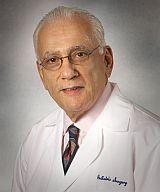 |
Dr. Guido LaPorta |
Guido LaPorta: Many doctors in private practices are trying to keep all the services they can within their practices, but in my area there are many groups being formed. I have noticed that once physicians join groups, they tend to lose the incentive to work as hard and are more willing to refer patients.
Meet the Masters is broadcast each Tuesday Night at 9 PM (EST). This week's guest is to be announced. You can register for this event by clicking here.
12/21/2016
RESPONSES/COMMENTS (SUCCESS TIPS FROM THE MASTERS)
From: Philip J. Shapiro, DPM
Dr. Len Schwartz is offering poor advice. To ask a patient in the treatment room to give an unrehearsed video testimonial is nothing less than entrapment. Does this type of behavior promote a quality doctor-patient relationship based on trust? Does the patient have time to consider that their privacy as a patient is being compromised?
Having a negative review online is a fact of life in today’s world. Does the author of a negative review have a valid point? Does something need to be changed in your office? The idea of having a bank of positive comments posted online via entrapped patients is fraudulent. Grow a practice via sound and honest practice management, and that especially includes the staff and their attitudes, and the negative reviews won’t be as influential.
Philip J. Shapiro, DPM, Ormond Beach, FL
12/20/2016
SUCCESS TIPS FROM THE MASTERS
Bret Ribotsky: What’s the best way to deal with a negative review on a site like Healthgrades, Google, or Yelp?
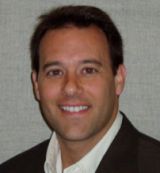 |
Dr. Len Schwartz |
Len Schwartz: Once negative comment has been written, there is almost nothing you can do. What you can do today is start building a huge bank of positive comments in advance. Often, you can ask a patient in the treatment room to take out their phone and capture a 20 second video testimonial on their phone, which you upload to YouTube, Facebook, and Google or a quick review on these sites (from the patient's phone). These video comments will work magic. When someone writes a bad comment about you, it gets lost in the dozens of positive reviews.
 |
Dr. Guido LaPorta |
Meet the Masters is broadcast each Tuesday Night at 9 PM (EST). This week's guest will be PM Hall of Fame podiatrist Dr. Guido LaPorta. You can register for this event by clicking here
12/13/2016
SUCCESS TIPS FROM THE MASTERS
Bret Ribotsky: Everybody has been talking about “biofilm” over the past year. What role does this play in treating patients with open wounds?
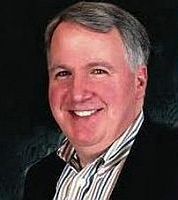 |
Dr. Warren Joseph |
Warren Joseph: There has been a push today to identify all the organisms within the biofilm, but we really don’t know their role. I’ve been lecturing for years on infected vs. non-infected wounds, and today I consider myself a biofilm agnostic. I know they exist, but we don’t know what they mean. About two years ago, the European Wound Management Association said that we know it exists, but we are unclear what role biofilm takes in wound healing. I do believe that molecular diagnostics are the future.
 |
Dr. Len Schwartz |
Meet the Masters is broadcast each Tuesday Night at 9 PM (EST). This week's guest will be entrepreneur, speaker, author, and master marketing consultant, Dr. Len Schwartz . You can register for this event by clicking here
11/30/2016
SUCCESS TIPS FROM THE MASTERS
Bret Ribotsky: You have been organizing a “candy exchange” each year for kids with diabetes during Halloween. What benefits have you seen as a result?
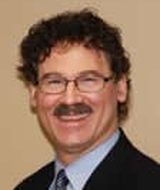 |
Dr. Bruce Blank |
Bruce Blank: This started out small in just my office with my patients, but through the years, it has grown. All the endocrinologists in my town share this event with their patients. While my goal was not to do a marketing event, it has turned out to be a local media event that has helped to grow my practice.
 |
Dr. Warren Joseph |
Meet the Masters is broadcast each Tuesday Night at 9 PM (EST). This week's guest will be infectious diseases expert Dr. Warren Joseph. You can register for this event by clicking here
11/16/2016
SUCCESS TIPS FROM THE MASTERS
Bret Ribotsky: Are wounds ever cured, or are they just managed into remission?
 |
Dr. Allen Jacobs |
Allen Jacobs: Doesn’t that have a lot to do with what type of ulcer you have? For example, a sub 5th metatarsal ulcer can be treated with a bone resection and if the bone is resected, I can assure that this will cure that ulcer. You don’t cure a patient if the deformity is not corrected. Sometimes surgery is the best thing for a patient.
 |
Dr. Bruce Blank |
Meet the Masters is broadcast each Tuesday Night at 9 PM (EST). This week's guest will be Dr. Bruce Blank. You can register for this event by clicking here
10/28/2016
RESPONSES/COMMENTS (SUCCESS TIPS FROM THE MASTERS)
From: Leonard A. Levy, DPM, MPH
John Mattiacci, DPM indicated that podiatric physicians will never have parity because we have a different degree. I have just completed 17 years as associate dean for research and innovation at an osteopathic medical school which also included frequently interviewing applicants for admission. DO graduates have parity with allopathic physicians, yet they each have separate degrees. DPMs within its specialty provide medical and surgical care no different than MDs and DOs.
While it is true that allopathic medical school students on average have higher GPA and MCAT scores, that has absolutely nothing to do with what their function is in the healthcare world. As Shakespeare said, “a rose by any other name is still a rose,” so we need to be more aggressive in letting members of our own profession as well as MDs and DOs know that we too are a “rose.” If just that message went out to applicants to our schools (and if we believed it too), it would be more likely that they would have higher GPAs and MCAT scores.
Leonard A. Levy, DPM, MPH, Ft. Lauderdale, FL
10/26/2016
SUCCESS TIPS FROM THE MASTERS
Bret Ribotsky: What’s going on with the significant reduction in applications to podiatry schools? How is this going to affect the APMA’s goal of parity?
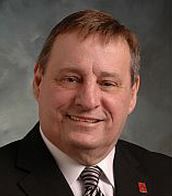 |
Dr. John Mattiacci |
John Mattiacci: This year, we had approximately 900 people apply to all the schools in podiatry. Temple medical school had over 5,000 applicants. Regarding parity, we will never have parity because we have a different degree. Medical school applicants have an average MCAT score of 32+ and a GPA of 3.65; podiatric medical school students have an average MCAT of 25 and a GPA of 3.2. We are not the same. However, we all should be proud that podiatrists provide a great service and earn a good living.
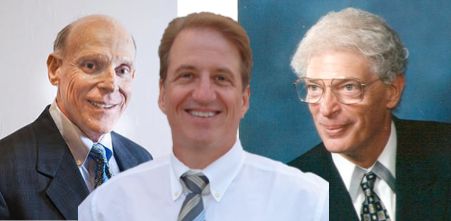 |
Drs. Steven Kravitz, Bob Barrett, and Allen Jacobs |
Meet the Masters is broadcast each Tuesday Night at 9 PM (EST). This week's guest will be wound care experts Drs. Steven Kravitz, Bob Barrett, and Allen Jacobs. You can register for this event by clicking here
10/20/2016
RESPONSES/COMMENTS (SUCCESS TIPS FROM THE MASTERS)
From: Robert D. Phillips, DPM
I am a little bit disturbed by the answer by Dr. Vogler as printed in PM News, in response to Dr. Ribotsky's question, "How are you applying podiatric biomechanics to advanced surgical procedures such as ankle fusions?" Unfortunately, Dr. Vogler did not really address any of the changes in the biomechanics of the lower extremity when one does an ankle fusion, and instead made a very generalized statement about ankle fusion changing the biomechanics of the lower extremity, referred to nondescript changes in orthotic technology, and finally recommended that an orthotist be consulted.
If this is the best answer that such a renowned surgeon as Dr. Vogler can give, it is indeed a sad commentary on the low state of knowledge of kinesiology, kinematics, and kinetics of the lower extremity that is sweeping our profession. It is very important that podiatrists not only fully understand how...
Editor's note: Dr. Phillips' extended-length letter can be read here.
10/18/2016
SUCCESS TIPS FROM THE MASTERS
Bret Ribotsky: How are you applying podiatric biomechanics to advanced surgical procedures such as ankle fusions?
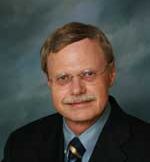 |
Dr. Harold Vogler |
Harold Vogler: Once you alter the biomechanics of the musculoskeletal system in the lower extremity, you do have to make accommodation so that they (patients) can have a comfortable gait pattern. There are a variety of ways of doing this. Orthotics have made great advances and strides. There is technology available for orthotics that did not exist 10, 20, or 30 years ago that can improve weight-bearing after these procedures, and make orthotics more functional. So you should very much consider using the skills of a good orthotist after you do these major reconstructive procedures to make the extremity more functional.
 |
Dr. John Mattiacci |
Meet the Masters is broadcast each Tuesday Night at 9 PM (EST). The next segment will feature Dr. John Mattiacci, Dean of the Temple University School of Podiatric Medicine. You can register for this event by clicking here
10/04/2016
SUCCESS TIPS FROM THE MASTERS
Bret Ribotsky: When evaluating venous disease in a leg with a veinous ulceration, how do you image to find the pathology?
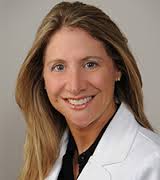 |
Dr. Jodi Schoenhaus |
Jodi Schoenhaus: You must know the anatomy and understand how to use an ultrasound to image vessels. Visualization is different than looking at muscular skeletal structures. Then you look at, for example, the great saphenous vein. The normal diameter is 4.2mm, but if it's larger, then it's an indication of reflux.
Meet the Masters is broadcast each Tuesday night at 9 PM (EST). This week's guest is to be announced. You can register for future events by clicking here.
09/28/2016
SUCCESS TIPS FROM THE MASTERS
Bret Ribotsky: What are your thoughts for initial treatment and management of a sub 1st metatarsal malum perforans ulcer?
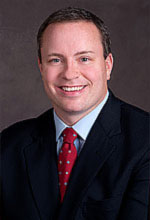 |
Dr. Matthew Regulski |
Matthew Regulski: I always start by looking at the biofilm. Since today we have the ability to do DNA testing, I start treatment by doing a good debridement and sending a tissue sample for DNA testing to determine exactly what organisms are living on the wound bed. Then, topical formulations can be created that are 1-5,000 times stronger than the minimum inhibitory concentrations (MICs) of these organisms. This treatment can reduce the oxidative stress that leads to cellular senescence.
 |
Dr. Jodi Schoenhaus |
Meet the Masters is broadcast each Tuesday night at 9 PM (EST). This week's guest is venous disease specialist Dr. Jodi Schoenhaus. You can register for future events by clicking here
09/21/2016
SUCCESS TIPS FROM THE MASTERS
Bret Ribotsky: Who determines what the “standard of care” is?
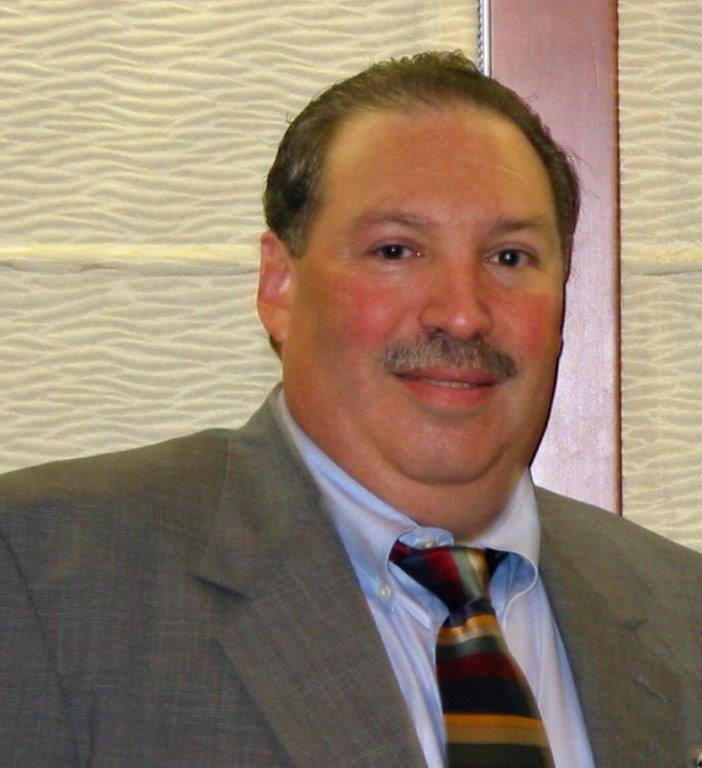 |
Dr. Jay Grife |
Jay Grife: The “standard of care” can have several definitions depending upon location of the case. Different states have different laws. Most states have a reasonable person standard of care. What does a reasonable person do in a similar situation? Who’s that reasonable person? That’s the gray area in the law. Be careful what you advertise, as if you say you’re an expert in wound-care, diabetes, kids, you will be held to a level above a "reasonable" podiatrist.
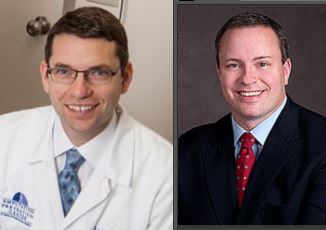 |
Drs. Lee Rogers and Matthew Regulski |
Meet the Masters is broadcast each Tuesday night at 9 PM (EST). This week's guests are wound care experts Drs. Lee Rogers and Matthew Regulski. You can register for future events by clicking here
09/13/2016
SUCCESS TIPS FROM THE MASTERS
Bret Ribotsky: Watching the Olympics, we saw the athletes wearing some type of compression stockings, or garments. Is there any advantage in recommending this to our patients?
 |
Dr. Brian Fullem |
Brian Fullem: There has been research to show value in compressions to help with recovery, but not with performance. I often tell my patients to wear compression stockings to sleep after a strenuous workout. Wearing them during the event can help a little with warmth, but that’s all.
Meet the Masters is broadcast each Tuesday night at 9 PM (EST). This week's guest is to be announced. You can register for future events by clicking here
09/06/2016
SUCCESS TIPS FROM THE MASTERS
Bret Ribotsky: Currently, we evaluate residents and have set benchmarks with the number of cases performed. Is this the best way to evaluate competence?
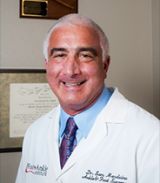 |
Dr. Sam Mendicino |
Sam Mendicino: For outstanding wound care residencies, residents are forced to get the minimum activity value (MAV) for surgical cases, and great surgical programs are forced to get enough biomechanical patients to work up. I’m not smart enough to treat wounds; I send those patients to others with more experience. I have always favored the dental model (in which dentists can chose a specialization, e.g., orthodontics, periodontics, etc.).
Meet the Masters is broadcast each Tuesday night at 9 PM (EST). This week's guest is to be announced. You can register for future events by clicking here
|
| |

|
|
|







